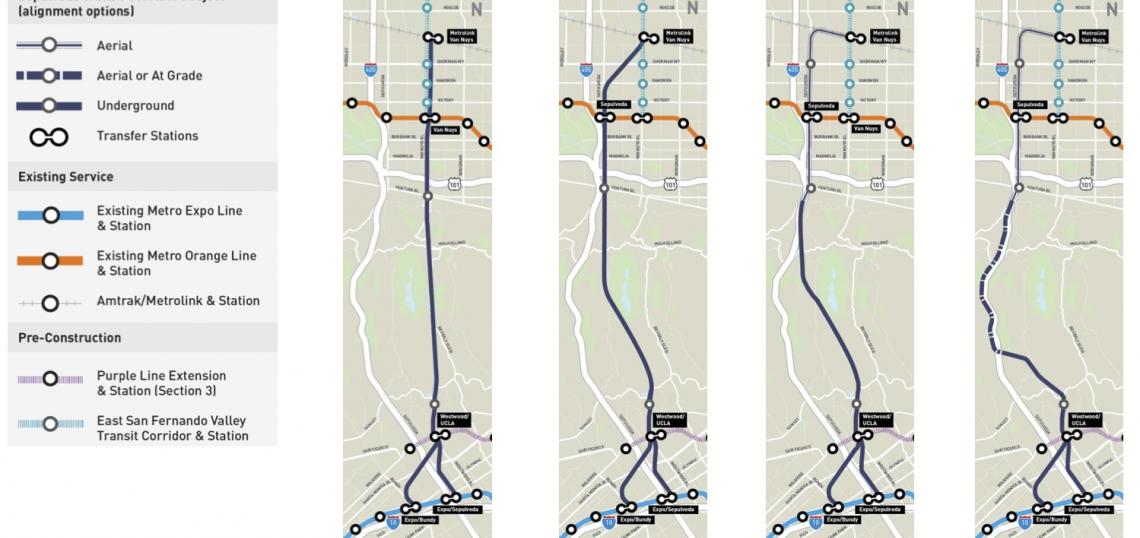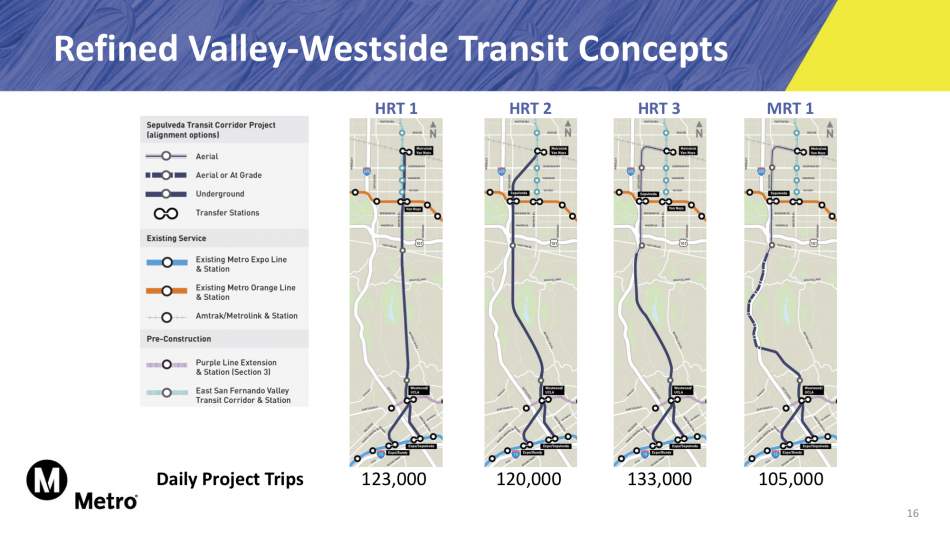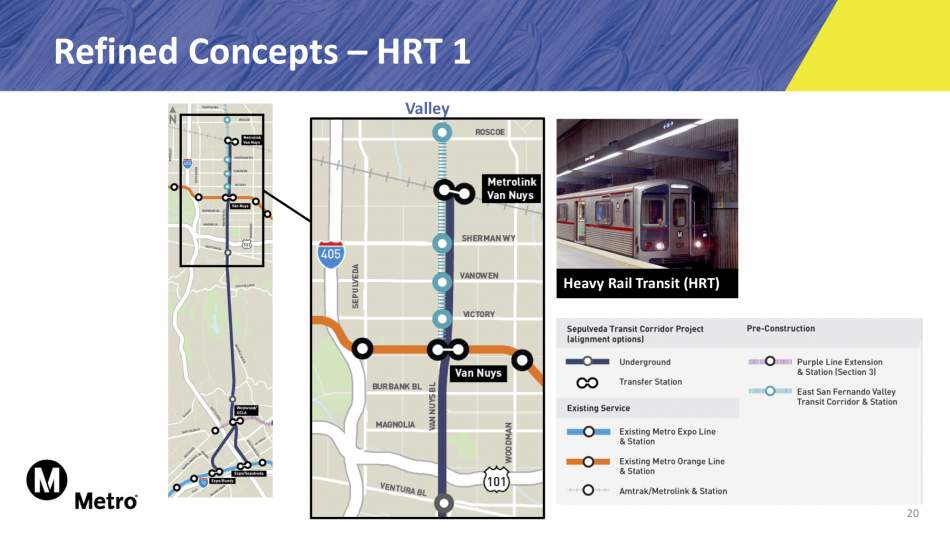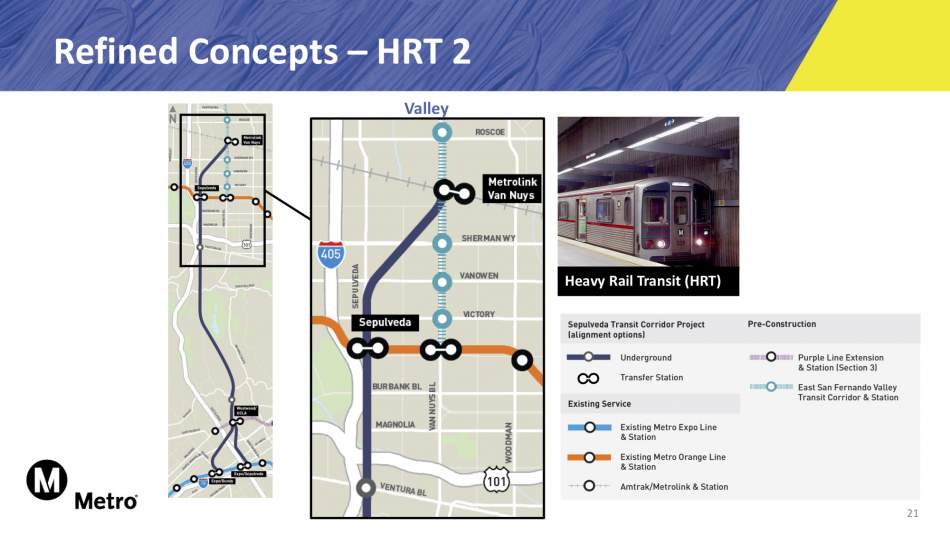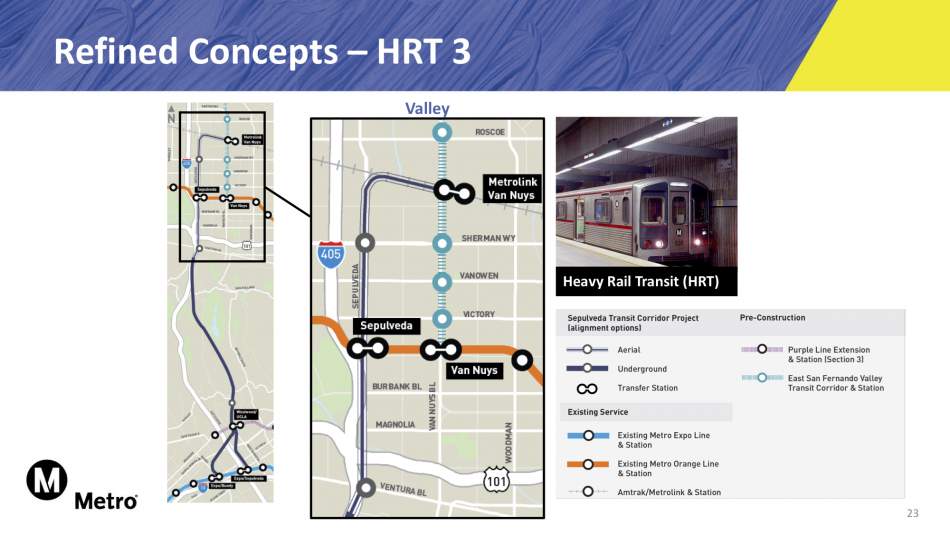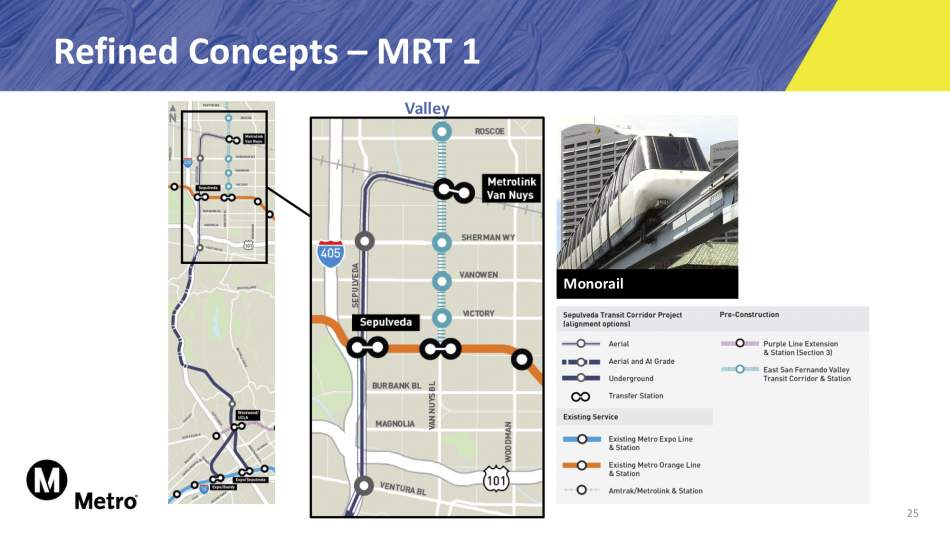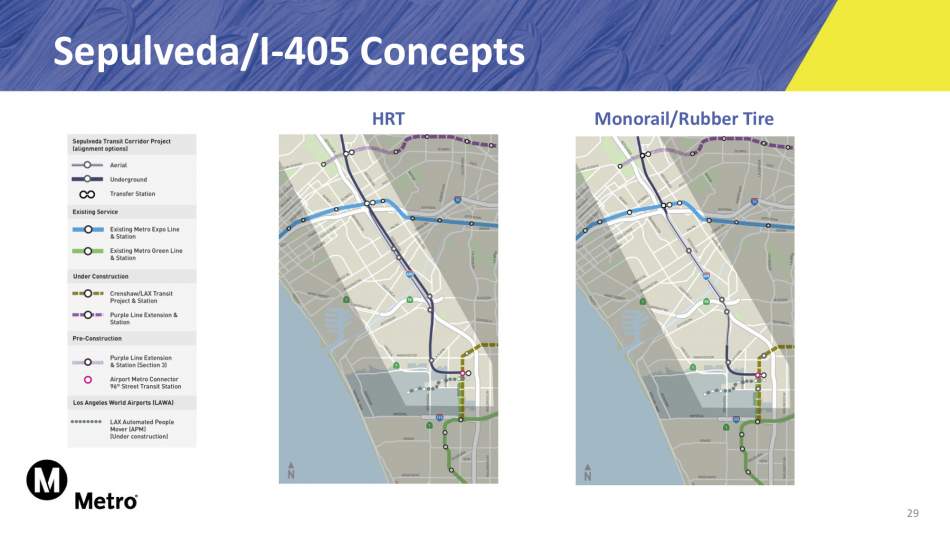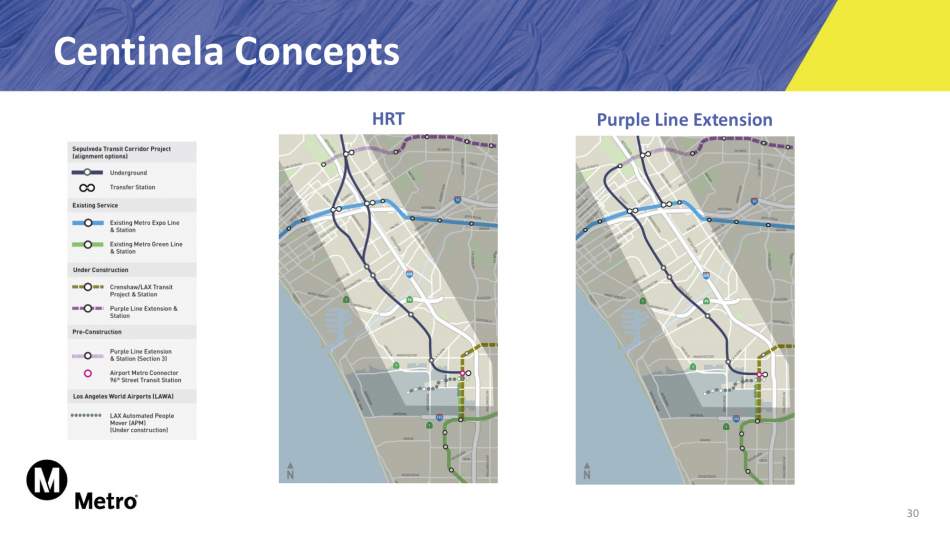Metro has unveiled its refined concepts for the Sepulveda Pass Transit Corridor - the proposed rail line slated to link the San Fernando Valley to the job centers of the Westside and Los Angeles International Airport.
The project, which is currently in the midst of its feasibility study, has nearly $10 billion in local funding through the sales tax increases approved under Measure R and M. Each of the four concepts now under consideration - which have been pared down from six options presented in June 2018 - would run between Van Nuys in the north and Los Angeles International Airport in the south. All would be expected to attract more than 100,000 daily passengers, and provide an end-to-end trip that comparable to - or faster than - a car trip down the 405 Freeway.
HRT 1 and HRT 2
A north-to-south trip on the HRT 1 alignment would begin at the Van Nuys Metrolink Station and proceed south underneath Van Nuys Boulevard, with stops planned at the Van Nuys Orange Line Station and Ventura Boulevard. The subway tunnels of this alignment would run below the route of the East San Fernando Valley Transit Corridor, a proposed light rail line between the Orange Line and the Sylmar Metrolink Station that is scheduled to begin construction in 2022. From Ventura Boulevard, the route continues south below the Santa Monica Mountains, with a station at the UCLA campus, a connection to the Purple Line's Wilshire/Westwood Station, and a terminus at either Expo/Bundy or Expo Sepulveda Station.
HRT 1 would be built entirely underground. Metro estimates that this alignment would attract approximately 123,000 daily passengers with a 15-minute trip between Van Nuys and the Westside
HRT 2 would run along a similar path to HRT 1, except that the alignment would veer west from Van Nuys Boulevard to instead travel beneath Sepulveda Boulevard in the Valley, with stations once again at the Orange Line and Ventura Boulevard. This alternative would capture an estimated 120,000 daily trips with a 16-minute end-to-end trip.
A presentation by Metro staff notes that HRT 1 and 2 provide the most excess capacity and the fastest travel times of the four under consideration, but also concede that the extensive tunneling may be challenged by existing underground infrastructure. The street-running light rail line planned down Van Nuys would pose difficulties for a tunnel along the corridor.
HRT 3
Unlike its two heavy rail counterpart, HRT 3 would not be built exclusively underground. A map shows the alignment beginning on an aerial structure at the Van Nuys Metrolink Station, then proceeding west in the existing rail right-of-way before turning south at Sepulveda, with stations at Sherman Way, the Sepulveda Orange Line Station, and Ventura Boulevard. After passing south of Ventura Boulevard, the alignment would travel below ground with stations at UCLA, the Purple Line's Wilshire/Westwood top, and a terminus at either Expo/Bundy or Expo/Sepulveda Station.
Metro projects that HRT would attract 133,000 daily passengers with an 18-minute end-to-end trip. The alignment could save money due through lower-cost aerial construction, although would result in more impacts to existing properties and a loss of parking along Sepulveda Boulevard.
MRT 1
Metro's fourth concept, MRT 1, would be a monorail system. It would begin in a similar fashion to HRT 3, traveling above-grade from the Van Nuys Metrolink Station within an existing right-of-way, then in an elevated structure above Sepulveda Boulevard. After crossing Ventura Boulevard, the alignment would shift to the median of the 405 Freeway, where trains would run in at-grade and above-grade structures, before undergrounding to place stations at UCLA, the Wilshire/Westwood Station, and a terminus at either Expo/Bundy Station or Expo/Sepulveda Station.
A monorail system, long-discussed in Los Angeles but never built, would offer cost savings relative to heavy rail - especially with extensive at-grade and above-grade construction. However, this would result in a slowers speed - approximately 26 minutes end-to-end - and fewer passengers - approximately 105,000.
Eliminated from Further Consideration
Notably absent from these options is any mention of light rail. According to Metro staff, the shorter trains and smaller cars of light rail would not offer sufficient capacity for the demand anticipated along the corridor - in fact, ridership would exceed capacity on the southern part of the light rail line.
Also eliminated from further condition were alignments terminating at the Westwood Veterans Administration Campus, which was determined to be located too far west to serve as a southern terminus for the project.
Westside to LAX Concepts
While Metro currently hopes to complete the first phase of the Sepulveda Pass project - between the Valley and the Westside - prior to the 2028 Summer Olympic Games, a second phase of the project - scheduled to break ground in 2048 - is planned to extend service farther south.
The presentation has unveiled two initial concepts for a path between the Westside to Los Angeles International Airport.
In one concept, the alignment would continue underground or on aerial structures from Expo/Sepulveda Station, paralleling Sepulveda Boulevard and the 405 Freeway. Stations could potentially be located at Venice Boulevard, Washington Boulevard, Jefferson Boulevard, Playa Vista, and Manchester Boulevard, with a terminus at the new Airport Metro Connector Station, which will connect to the Green and Crenshaw/LAX Lines, as well as the LAX Automated People Mover.
If built as a monorail, an aerial alignment along the 405 Freeway is shown in the presentation.
Metro is also considering an alignment beneath Centinela Avenue with stations at Venice, Washington, Jefferson, Manchester, and the eventual terminus at LAX.
A second alternative, the Centinela concept could be built as an extension of the Purple Line, which could veer south after reaching the Veterans Administration Campus just west of the 405 Freeway.
All stations on both conceptual alignments would be considered opportunities for park-and-ride facilities.
More information will be available at the following community meetings:
Wednesday, January 30, 6 – 8 p.m.
Westwood Presbyterian Church
Hoffman Hall
10822 Wilshire Blvd.
Los Angeles, CA 90024
Saturday, February 2, 10 a.m. – 12 p.m.
Marvin Braude Constituent Service Center
6262 Van Nuys Blvd.
Van Nuys, CA 91401
Tuesday, February 5, 6 – 8 p.m.
Proud Bird Restaurant
Aviator Room
11022 Aviation Blvd.
Los Angeles, CA 90045
- Six Initial Concepts Unveiled for a Sepulveda Rail Line (Urbanize LA)




